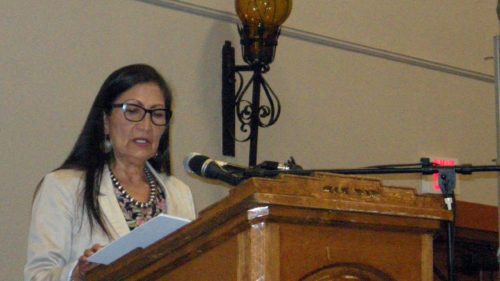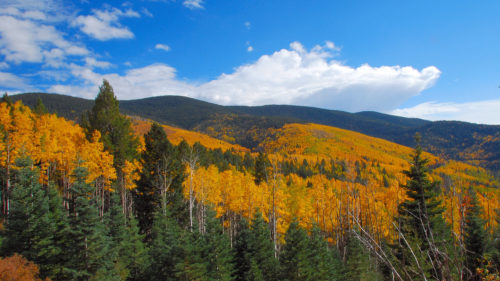Utah Congressman Rob Bishop has publicly stated that he will work with the Trump Administration to overturn all of President Obama’s National Monument designations.¹ For New Mexico hunters and anglers, this means we could potentially lose the protections we have for Rio Grande del Norte and Organ Mountains-Desert Peaks, two extremely popular designations. But how easy is it for one President to overturn the proclamations of their predecessor? In short, it’s not that clear or that easy.
Under Article IV of the Constitution, “Congress shall have Power to dispose of and make all needful Rules and Regulations respecting the Territory or other Property belonging to the United States.”² Over the years, Congress has delegated its land management authority to the President; most conspicuously in the 1906 Antiquities Act, which states that the President, “in his discretion [may] declare by public proclamation…national monuments.”³ Since 1933, monuments were managed by the National Park Service, however, President Bill Clinton changed all of that and turned management over to other land management agencies.4 In the proclamation of the Grand Staircase-Escalante National Monument, President Clinton stated that BLM would continue to manage the land. BLM may have been chosen because it was already managing the area and President Clinton wanted conservation to be just one of the uses for which the area was being managed. The selection of a management agency other than the National Park Service made the Grand Staircase-Escalante designation more controversial.5
Despite controversies, the President now has wide ranging powers to designate national monuments. When a President issues a proclamation on matters either within the President’s inherent powers or to execute delegated authority, that proclamation has the force of law.<sup6 However, a President can modify a monument because the Antiquities Act directs that all monuments should be “in all cases confined to the smallest area compatible with the proper care and management of the objects to be protected.7 Numerous Presidents have modified previously created monuments. For example, in 1936, President Franklin Roosevelt issued a proclamation modifying the restrictions on the Katmai National Monument in Alaska to make the reservations made in earlier proclamations “subject to valid claims under the public-land laws … existing
when the proclamations were issued and since maintained.”8 Still, no President has ever attempted to terminate designations made by a predecessor.9
Finally, there is no separate authority for the President to revoke or terminate a monument. That means that any authority that does exist for the President to revoke a monument designation, it must be implied from the other powers granted to the President in the Antiquities Act. Because the President has no inherent authority over lands and was acting only with the power given him by Congress, a monument designation was the equivalent of an act of Congress. Since his action was the equivalent of Congressional action, only Congressional action could counter that action. This is the long-winded lawyer way of saying, that President Trump can’t unilaterally revoke the monuments created by President Obama, but Congress can.
This article appeared in the Spring 2017 edition of the Outdoor Reporter.
Citations:
- http://www.sltrib.com/home/4675910-155/utahs-bishop-asks-trump-to-consider
- US Const. Art. IV §3 cl.2.
- Act of June 8, 1906, ch. 3060, 34 Stat. 225, codified at 16 U.S.C. §§ 431-433.
- Carol Hardy Vincent and Pamela Baldwin, Report for Congress RL 30528, National Monuments and the Antiquities Act. As to whether the assignment of a national monument by an agency other than the National Park Service might constitute a reorganization of government see, Pamela Baldwin, General Distribution Memorandum: Legal Issues Raised by the Designation of the Grand Staircase-Escalante National Monument, December 13, 1996.
- For a discussion of the legal issues surrounding President Clinton choosing a management agency other than the National Park Service see, Pamela Baldwin, Legal Issues Raised by the Designation of Grand Staircase-Escalante National Monument, CRS Memorandum, December 13, 1996.
- See Jenkins v. Collard, 145 U.S. 546, 560-561 (1891) and cases involving executive orders e.g. Independent Meat Packers Ass’n v. Butz, 526 F.2d 228, 234 (8th Cir. 1975), cert denied 424 U.S. 966 (1976); Gnotta v. United States, 415 F.2d 1271, 1275 (8th Cir. 1969).
- 39 Op. Atty. Gen. 185 (1938) (Opinion).
- Proclamation No. 2177, 35 Stat. 3523 (1936); see also National Park Service, ISOLATED PARADISE: AN ADMINISTRATIVE HISTORY OF THE KATMAI AND ANIAKCHAK NATIONAL PARK UNITS, ch. 3 (2000), available at https://www.nps.gov/parkhistory/online_books/katm/adhi/chap3.htm
- See comments of John Leshy at: Press Briefing by George Frampton, Acting Chair of the Council on Environmental Quality and John Leshy, Solicitor of the Department of the Interior, June 9, 2000.



